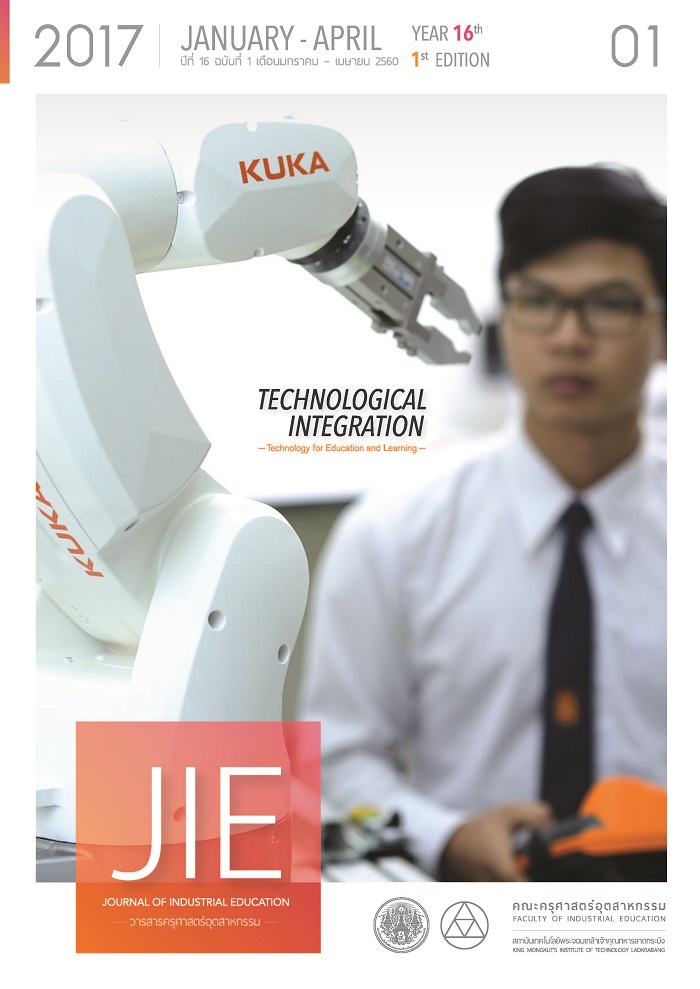Creative Environmental Friendly Coloration System for Design
Keywords:
creative, environmental-friendly, coloration system, designAbstract
The purposes of this research are (1) to study the color wisdom, (2) To analyze characteristics of the color originated from environment-friendly materials based on the principle of color wisdom, and (3) to apply the research results to the design
The main study highlights four concepts: (1) Thai color , color processes from books, related documents and community’s sages – traditional body of knowledge which is still existing,(2) being environment – friendly by studying the materials used for creating color in the study of the first issue,(3) the experiment on using the natural materials from the above study to create colors in order to find suitable ratios and physical characteristics for uses, and (4) applying the color from the experiment to commercial design.
The research results show that the color wisdom is a local folk art with unique identity. It can also be promoted and developed to use with the product beneficially in aspects of commercial creativity, identity promotion, and ability to reduce environmental impacts effectively.
These are in line with economic development and materials is beneficial and environment – friendly. The materials can be applied to create colors reflecting the way of life which links to cultural context and represent the identity.
References
[2] กลุ่มบริษัท ยูคอมจำกัด.2543. หัวโขน สมบัติศิลป์ แผ่นดินไทย. กรุงเทพฯ:กลุ่มบริษัท ยูคอมจำกัด
[3] วัฒนะ จูฑะวิภาค.2552.ศิลปะพื้นบ้าน.กรุงเทพ : สำนักพิมพ์แห่งจุฬาลงกรณ์มหาวิทยาลัย
[4] วิบูลย์ ลี้สุวรรณ.2556.ศิลปหัตถกรรมพื้นบ้าน.กรุงเทพฯ : ต้นอ้อ แกรมมี่.
[5] ไพโรจน์ พิทยเมธี .2558.THAI TONE. [ออนไลน์]. เข้าถึงได้จาก: https://www.mediafire.com/file/ b969jnpk4o4gkto/THAITONE.zip.(วันที่ค้นข้อมูล: 2 กุมภาพันธ์ 2559)
[6] ยุวดี ทองอ่อน .2558. ภูมิปัญญาพื้นบ้าน : การสร้างสรรค์วัสดุเพื่อเป็นมิตรต่อสิ่งแวดล้อม.ดุษฎีนิพนธ์ปรัชญาดุษฎีบัณฑิต. สาขาศิลปะการออกแบบ. คณะมัณฑณศิลป์. มหาวิทยาลัยศิลปากร
[7] รัษฎา วงศ์อนันต์ อุดมศักดิ์ สารีบุตรและจตุรงค์ เลาหะเพ็ญแสง.2558.การศึกษาศิลปวัฒนธรรมกลุ่มชาติพันธุ์ไทลื้อเพื่อการออกแบบพัฒนาเครื่องประกอบการแต่งกาย วารสารครุศาสตร์อุตสาหกรรม,14(3),น.368-375.
Wong a-nan R., Saributr A, and Louhapensang J.2015.Study of Ethnic Tailue Cultural Art for Accessory Product Design. Journal of Industrial education, 14(3),p.368-375
[8] สถาพร ดีบุญมี ณ ชุมแพ และ พิชัย สดภิบาล. (2552).วัสดุพื้นถิ่นภาคกลางที่ใช้ในการผลิตครุภัณฑ์.พิมพ์ครั้งที่ 1. กรุงเทพฯ:โอเดียนสโตร์.
[9] Akira Kurosawa.2014.THE COLOR THESAURUS.ค้นเมื่อวันที่5 มิถุนายน 2559.จากhttps://ingridsundberg.com/ 2014/02/04/the-color-thesaurus/
[10] Hopper,Robin.1984. The Ceramic Spectrum. rev. Pensylvania: Chilton Book Company.
Downloads
Published
How to Cite
Issue
Section
License
"The opinions and contents including the words in papers are responsibility by the authors."
"ข้อคิดเห็น เนื้อหา รวมทั้งการใช้ภาษาในบทความถือเป็นความรับผิดชอบของผู้เขียน"



